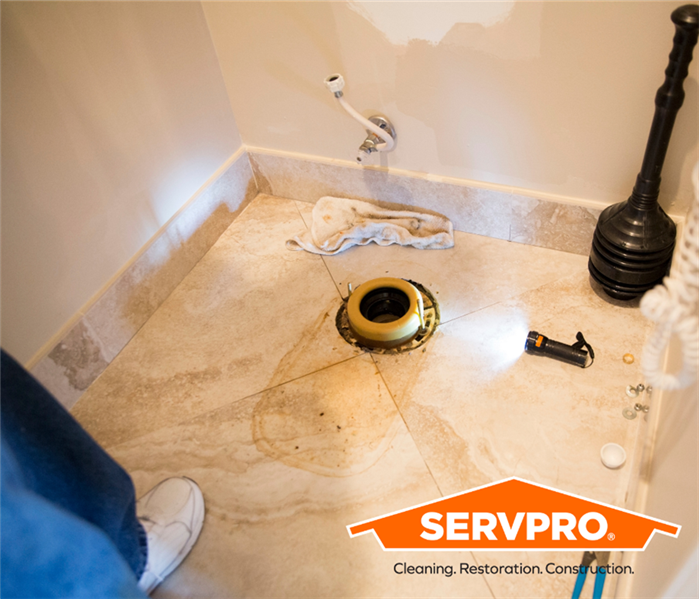Why Is My Toilet Leaking? Here Are 8 Possibilities!
1/6/2022 (Permalink)
Water leaking around your toilet can soak into the floor and beyond. It is important to take action if you see a puddle of water around the toilet bowl or even hear a slow drip somewhere behind the wall.
1. Tank is Cracked
While tanks and the bowls are pretty durable, they can get cracks. These often start with a small, hairline crack, but can get bigger. Toilets may get shifted or jarred and can get cracked in the back where you won’t notice them.
2. Worn Washers
There are two large bolts that keep the tank attached to the bowl, and two more that keep the toilet bolted to the floor. If the bolts or washers get stripped, rusted out, break, or wear out, they won’t be able to hold it all together.
3. Pipe Corrosion
There could be corrosion in your pipes because of age, impurities in the water, or heavy metals in your water. Rust will develop in the metallic portions of the toilet because of this corrosion.
Pipe corrosion can often cause a lot of damage because you often don’t know it is even there.
4. Float
The float is the hollow ball that floats on the surface of the water in your toilet tank. It can become unhooked, cracked, or it isn’t lined up properly, the fill valve may run too much, causing a leak. The chain may come off, or if it gets a crack, it can take on water and not work properly.
5. Faulty Supply Line
If there is any kind of damage to supply lines, it can put a major strain on your toilet. Sometimes, if the joints in a supply line come undone and break down, water starts to drip out. The rubber lining in a supply line can also start to leak after several years.
6. Worn-Out Fill Valve
The fill valve on the toilet can also wear down over time. This is often due to mineral deposits, but they can also rust. If enough builds up to warp the fill valve, it can stop working properly, preventing your toilet from shutting off and causing leakage.
7. Stuck or Worn-out Flapper
The flapper is that plug in the bottom of your tank. It releases the water when you flush. If it gets stuck, either open or closed, you have a problem. This can also happen if your handle is stuck.
If the flapper is stuck open, the fill valve will not shut off, so it will just keep running. If the flapper wears out, no longer fits properly, or gets a tear, then it will not be able to regulate the water in the tank.
8. Broken Connections
Your toilet has many different connectors that prevent water leaks. If any of these connections lose their seal, water may end up on your bathroom floor. You can check your toilet’s connections to see if there are any problems before they turn into leaks.
If you find you are dealing with a water loss from any of the above issues, call a plumber to address the leak. Once the leak is fixed SERVPRO of New Orleans Uptown & Mid-City is here to help! We can make sure the area is dry and help prevent further issues like microbial growth!




 24/7 Emergency Service
24/7 Emergency Service
